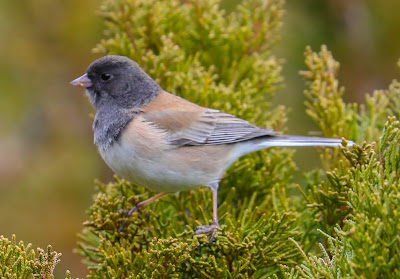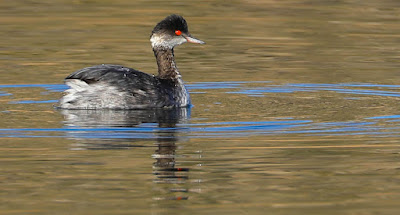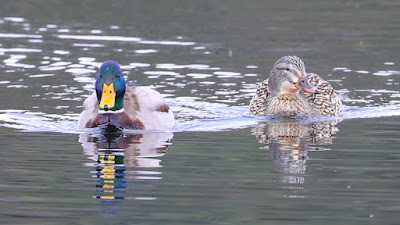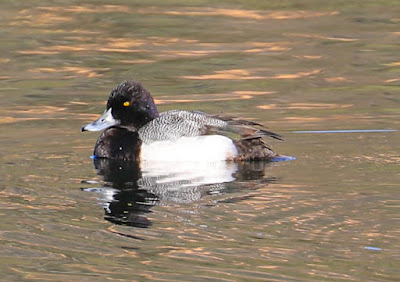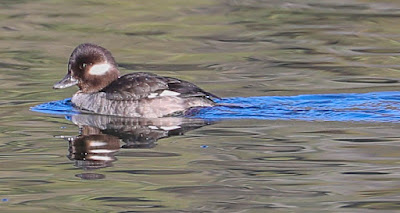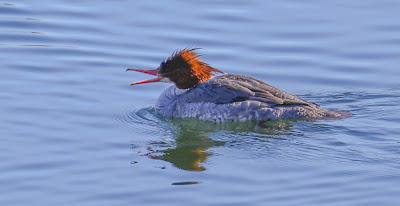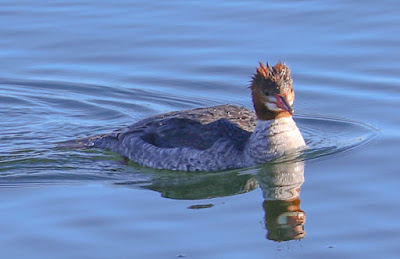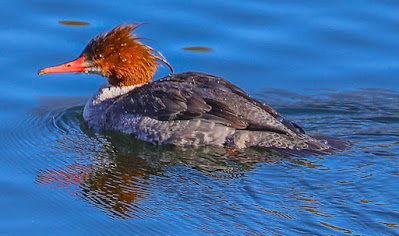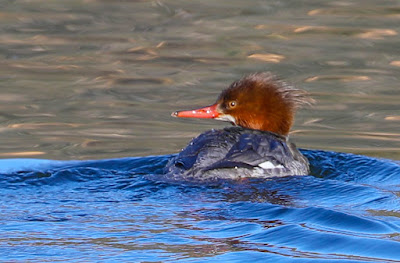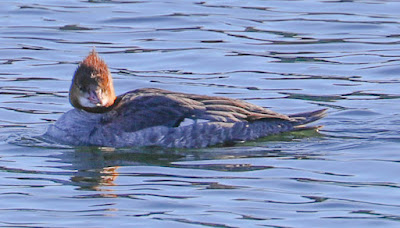I've struggled to find common mergansers. There are not many siting's on eBird, in our area. I made a first visit to Lake Silverwood, in the Cajon Pass area, to see some that were reported there and I found hooded, but not common mergansers. I found a bunch of them on a private reservoir in Mentone, but they kept on the other side of the reservoir from me and I was not able to get very close (and the photos were poor). This past Saturday I drove up to Lake Silverwood again and this time did find common mergansers and was able to get relatively close.
 |
| A female at Lake Silverwood. |
They have a crest of long head feathers that can form an erect crest, or the feathers can lie smoothly behind the head. They have a bill and legs that are red to brownish red (brightest on adult males and more brownish on juveniles). Males in breeding plumage have a black head with a green sheen, a white body, a gray tail and rump.
 |
| This photo was taken at the Mentone Reservoir. A male is back right. Two females are center/left and a ring-necked duck is right/center. |
 |
| This phot was also taken at the Mentone Reservoir. There are 10 females, 1 male back/right, a canvasback left/center and a ring-necked duck center/left. |
Females and "eclipse" mails (those not in breeding plumage) have a reddish-brown head, a white chin and otherwise are mostly gray. The look quite a bit like the red-breasted merganser females, but are distinguished by the white chin and a distinct line between the reddish head and gray neck and body. Juveniles, both male and female, look like adult females, but have a short white stripe with black edges between the eye and bill.
 |
| These females were all seen at Lake Silverwood. |
They eat primarily fish, nest in holes in trees, and live primarily on lakes and rivers in forested areas.
 |
| Immature birds (here with a ruddy duck) with a white stripe and black edges between the eye and bill. |










